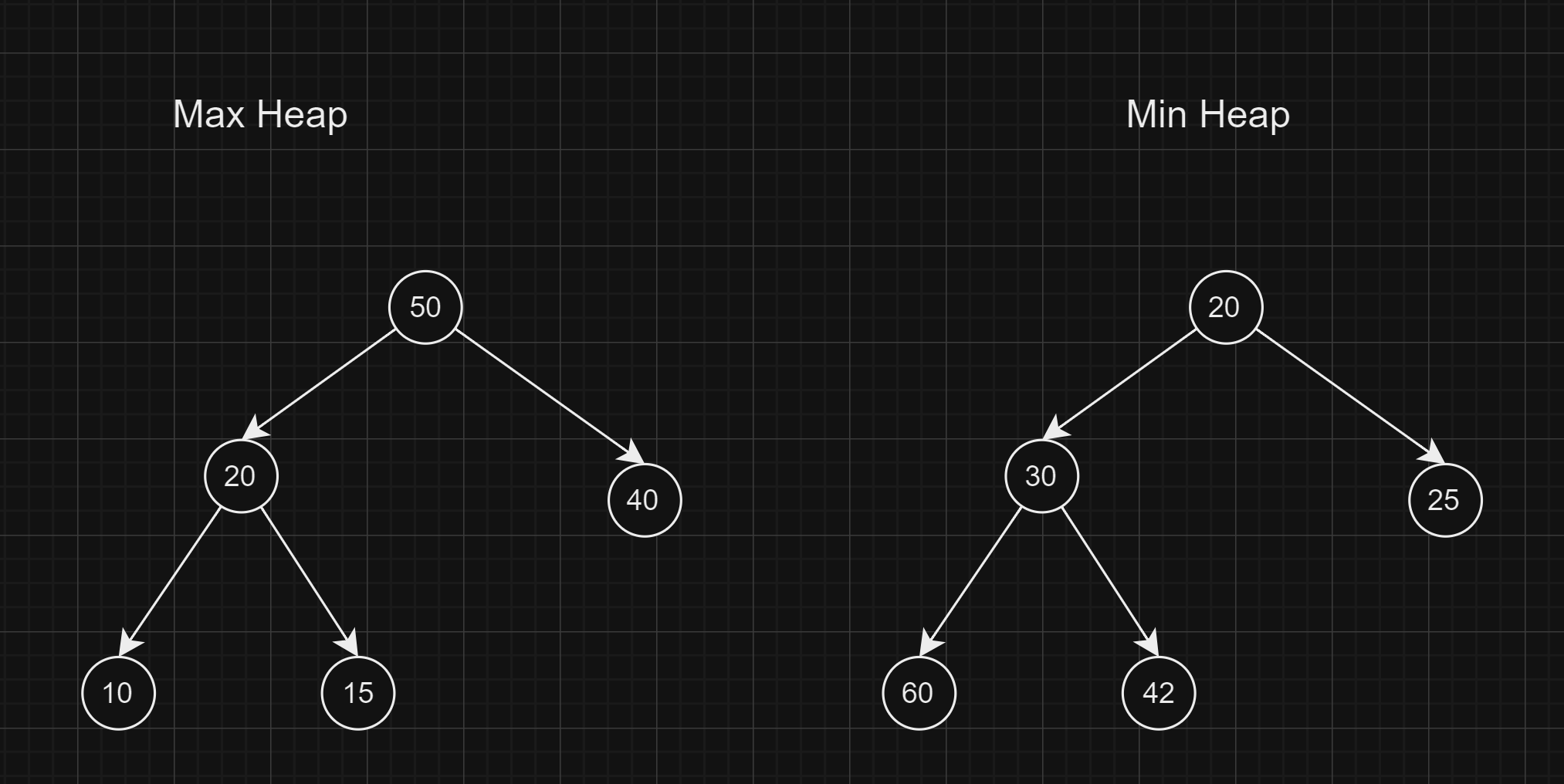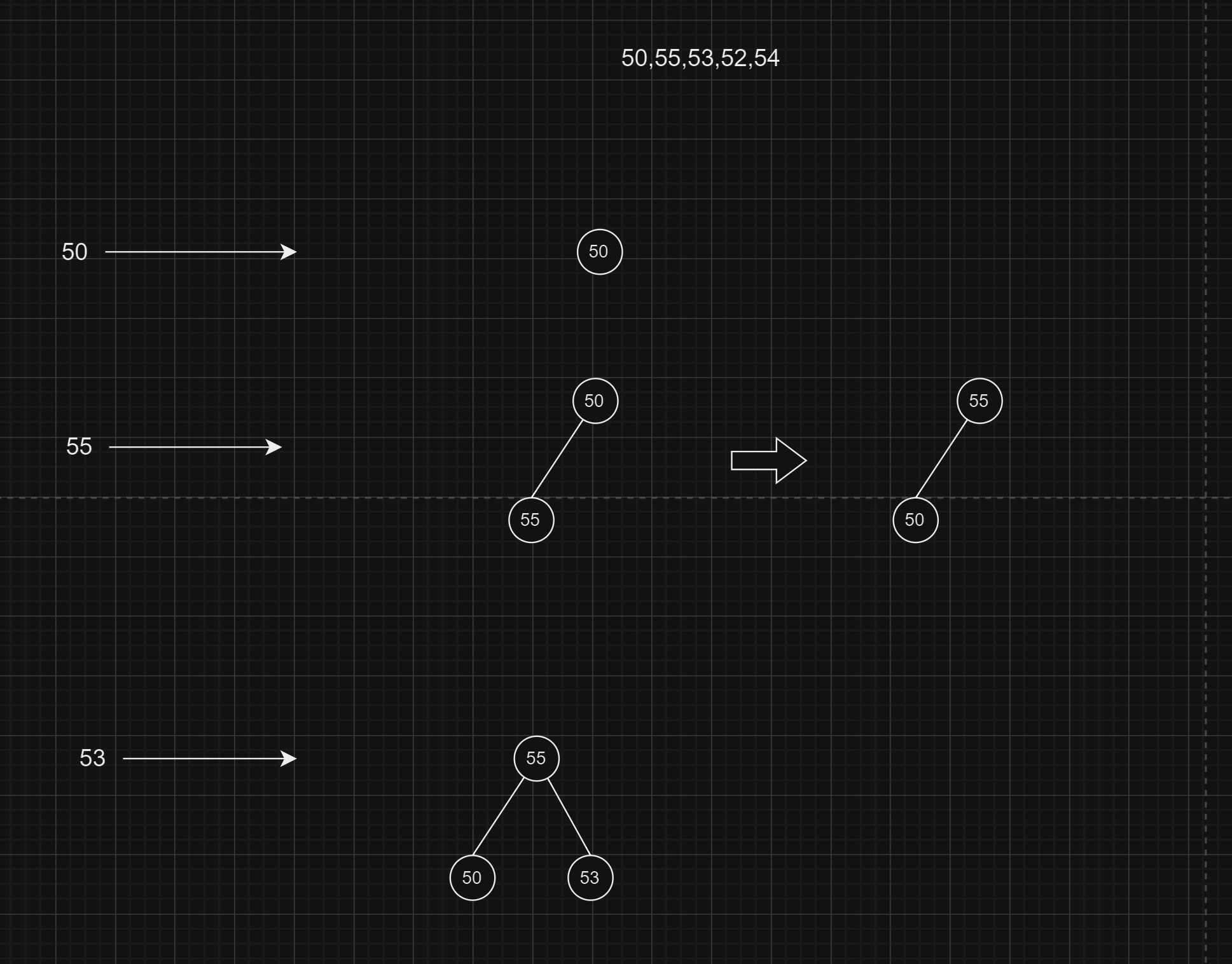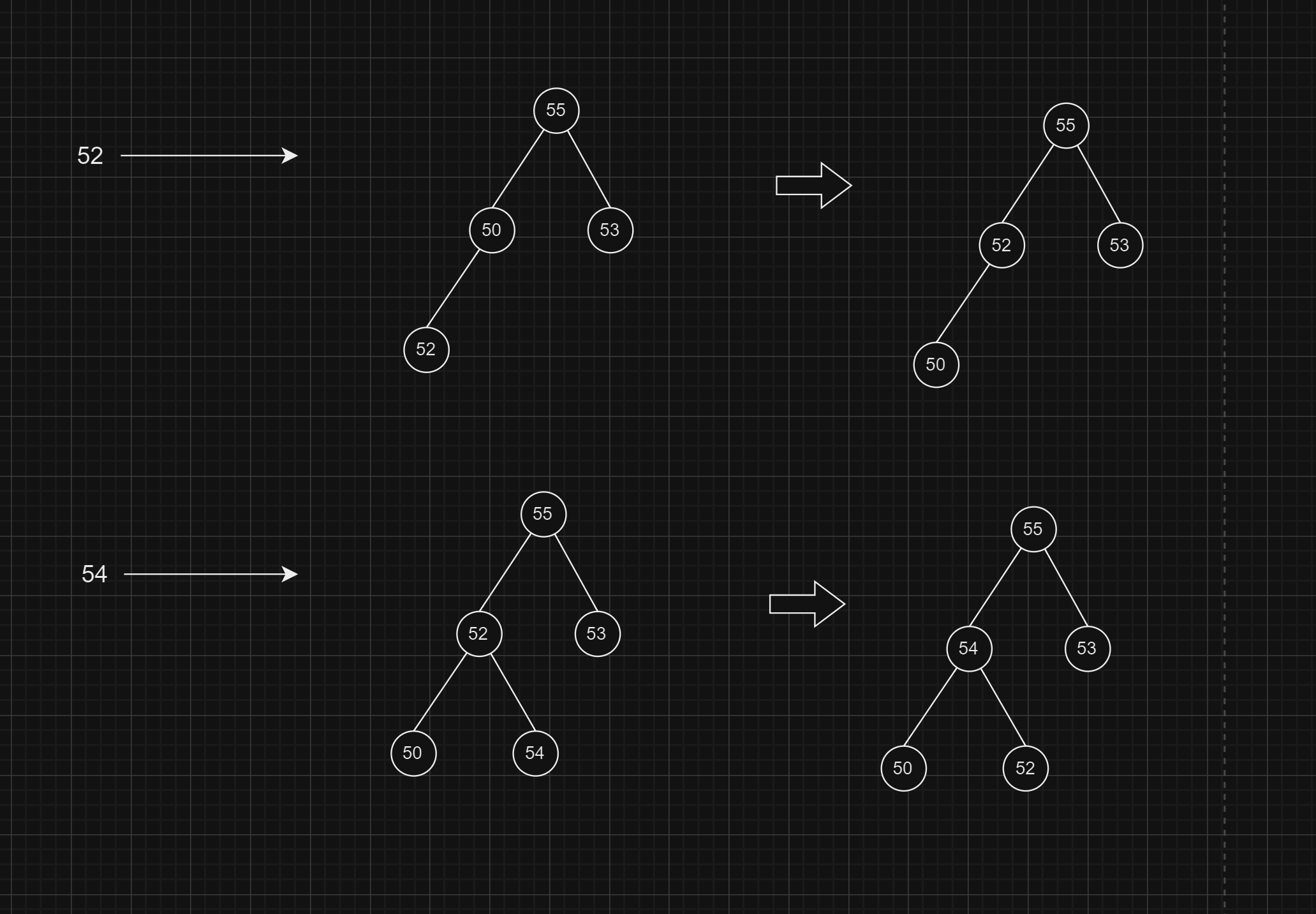Heap Implementation
 Chetan Datta
Chetan Datta
Brief
What is heap?
- A heap is a complete binary tree that follows the heap order property.
What is Complete Binary Tree (CBT)?
A complete binary tree is a binary tree in which every level is completely filled except for the last level.
Nodes are always added from the left.
Heap Order Property
There are 2 types of heaps
Max heap: The root node is always the maximum of all the elements.
Min heap: The root node is always the minimum of all the elements.

Operations
Insertion into heap
We insert nodes row-wise from left to right. So, when we insert a node, it will be inserted at the end of the array.
Hence, if the current node is i, then the child nodes are:
For zero-based index: left is
2i + 1and right is2i + 2.For one-based index: left is
2iand right is2i + 1.
Similarly, in all cases, the parent of the
ith node will bei/2.
public class CustomPriorityQueue {
private int[] arr = new int[100];
private int size;
public CustomPriorityQueue() {
size = 0;
}
}
If we insert a node at the end of the array for a max heap, we check whether the current node
iis greater than its parenti/2. If it is, we swap them. We continue checking the current swapped nodei/2with its parenti/4. We stop this iteration whenever the parent node’s value is greater than the child’s.In this way, the newly inserted node will propagate up until it is no longer greater than its parent.
public void add(int value){
size+=1;
int index = size;
arr[index] = value;
while(index!=1){
if (arr[index/2]<arr[index]){
swap(arr, index/2, index);
index = index/2;
}
else{
return;
}
}
}
Insertion Visualization


Deletion
Swap the first node with the last node.
Remove the last node by decrementing the size.
Propagate the root node to its correct position.
Check with the left and right child. If one of the children is greater than the parent, then swap.
Now go in the direction of the child that was swapped, meaning keep on checking the parent with its children and swap until the parent is larger than the children.
public void delete(){
arr[0] = arr[size-1];
size-=1;
int index = 0;
while (index<=size){
int leftIndex = 2 * index + 1;
int rightIndex = 2 * index + 2;
int largest = index;
if(arr[leftIndex]>arr[index]){
largest = leftIndex;
}
if (arr[rightIndex]>arr[index]) {
largest = rightIndex;
}
if (index!=largest){
swap(arr, index,largest);
index = largest;
}
else break;
}
}
Heapify
Convert a given array into a heap.
In a Complete Binary Tree (CBT), leaf nodes start from
n/2 + 1tonbecause if you take the last leaf node index asn - 1, then its parent isn/2. Hence, aftern/2, all the nodes will be leaf nodes.We apply the heapify algorithm in reverse order, that is, from
n/2 + 1to0. For each node, we treat it as the root node and apply the heapify algorithm to the entire subtree under it.
int[] arr = {54, 53, 55, 52, 50};
int n = arr.length;
for (int i=(n/2+1); i>=0; i--){
CustomPriorityQueue.heapify(arr,arr.length, i);
}
- This is similar to the delete functionality, but this is a recursive approach. We compare the current root node with its children and swap with the larger child. Then we call heapify on the child node index that got swapped, and we keep heapifying until the leaf node is reached or there is no need to swap because the parent is the largest.
public static void heapify(int[] num, int n, int i){
int largestIndex = i;
int leftIndex = 2*i + 1;
int rightIndex = 2*i + 2;
if(leftIndex<n&& num[largestIndex]<num[leftIndex]){
largestIndex = leftIndex;
}
if (rightIndex<n && num[largestIndex]<num[rightIndex]){
largestIndex = rightIndex;
}
if (largestIndex!=i){
swap(num,largestIndex,i);
heapify(num,n,largestIndex);
}
}
Heap Sort
When we get the array, we directly apply the heapify algorithm to get the first maximum. Then we apply heapify again to get the next maximum. Similarly, we keep applying heapify to get the subsequent maximum values.
Every time we get the maximum, we remove it from the array. Technically, we remove it by swapping the first node with the last node and decrementing the size by 1. In this way, we obtain the first maximum.
public static void heapSort(int[] nums){
int size = nums.length;
while (size>1){
heapify(nums,size,0);
swap(nums,0,size-1);
size-=1;
}
}
Important Note
decreaseKey() is similar to the insertion logic, where the current node will propagate upwards.
heapify() will propagate the current node downwards in the tree.
Code (Reference)
package heap;
import java.util.Arrays;
public class CustomPriorityQueue {
private int[] arr = new int[100];
private int size;
public CustomPriorityQueue() {
size = 0;
}
public void add(int value){
size+=1;
int index = size-1;
arr[index] = value;
while(index!=0){
if (arr[index/2]<arr[index]){
swap(arr, index/2, index);
index = index/2;
}
else{
return;
}
}
}
public void delete(){
arr[0] = arr[size-1];
size-=1;
int index = 0;
while (index<=size){
int leftIndex = 2 * index + 1;
int rightIndex = 2 * index + 2;
int largest = index;
if(arr[leftIndex]>arr[index]){
largest = leftIndex;
}
if (arr[rightIndex]>arr[index]) {
largest = rightIndex;
}
if (index!=largest){
swap(arr, index,largest);
index = largest;
}
else break;
}
}
public static void heapify(int[] num, int n, int i){
int largestIndex = i;
int leftIndex = 2*i + 1;
int rightIndex = 2*i + 2;
if(leftIndex<n&& num[largestIndex]<num[leftIndex]){
largestIndex = leftIndex;
}
if (rightIndex<n && num[largestIndex]<num[rightIndex]){
largestIndex = rightIndex;
}
if (largestIndex!=i){
swap(num,largestIndex,i);
heapify(num,n,largestIndex);
}
}
public static void heapSort(int[] nums){
int size = nums.length;
while (size>1){
heapify(nums,size,0);
swap(nums,0,size-1);
size-=1;
}
}
private static void swap(int[] arr, int i, int j){
int temp = arr[i];
arr[i] = arr[j];
arr[j] = temp;
}
@Override
public String toString() {
StringBuilder res = new StringBuilder();
for (int i=1; i<=size; i++){
res.append(arr[i]+" ");
}
return res.toString();
}
}
Application
Problem
A binary heap is a Binary Tree with the following properties: (link)
1) Its a complete tree (All levels are completely filled except possibly the last level and the last level has all keys as left as possible). This property of Binary Heap makes them suitable to be stored in an array.
2) A Binary Heap is either Min Heap or Max Heap. In a Min Binary Heap, the key at the root must be minimum among all keys present in Binary Heap. The same property must be recursively true for all nodes in Binary Tree. Max Binary Heap is similar to MinHeap.
You are given an empty Binary Min Heap and some queries and your task is to implement the three methods insertKey, deleteKey, and extractMin on the Binary Min Heap and call them as per the query given below:
1) 1 x (a query of this type means to insert an element in the min-heap with value x )
2) 2 x (a query of this type means to remove an element at position x from the min-heap)
3) 3 (a query like this removes the min element from the min-heap and prints it ).
Example 1:
Input:
Q = 7
Queries:
insertKey(4)
insertKey(2)
extractMin()
insertKey(6)
deleteKey(0)
extractMin()
extractMin()
Output: 2 6 - 1
Explanation: In the first test case for
query
insertKey(4) the heap will have {4}
insertKey(2) the heap will be {2 4}
extractMin() removes min element from
heap ie 2 and prints it
now heap is {4}
insertKey(6) inserts 6 to heap now heap
is {4 6}
deleteKey(0) delete element at position 0
of the heap,now heap is {6}
extractMin() remove min element from heap
ie 6 and prints it now the
heap is empty
extractMin() since the heap is empty thus
no min element exist so -1
is printed.
Solution
class MinHeap {
int[] harr;
int capacity;
int heap_size;
MinHeap(int cap) {
heap_size = 0;
capacity = cap;
harr = new int[cap];
}
int parent(int i) { return (i - 1) / 2; }
int left(int i) { return (2 * i + 1); }
int right(int i) { return (2 * i + 2); }
//Function to extract minimum value in heap and then to store
//next minimum value at first index.
int extractMin()
{
if(heap_size==0) return -1;
// Your code here.
int min = harr[0];
swap(harr, 0, heap_size-1);
heap_size-=1;
MinHeapify(0);
return min;
}
//Function to insert a value in Heap.
void insertKey(int k)
{
// Your code here.
if(heap_size + 1>capacity) return;
heap_size += 1;
int index = heap_size-1;
decreaseKey(index, k);
}
//Function to delete a key at ith index.
void deleteKey(int i)
{
// Your code here.
if(i>=heap_size) return;
//We have to keep minimum because
//if there is only one element then we cannot swap with last element
//Then later extract the minimum
decreaseKey(i, Integer.MIN_VALUE);
extractMin();
}
//Function to change value at ith index and store that value at first index.
void decreaseKey(int i, int new_val)
{
harr[i] = new_val;
while (i != 0 && harr[parent(i)] > harr[i]) {
swap(harr, i, parent(i));
i = parent(i);
}
}
/* You may call below MinHeapify function in
above codes. Please do not delete this code
if you are not writing your own MinHeapify */
void MinHeapify(int i) {
int l = left(i);
int r = right(i);
int smallest = i;
if (l < heap_size && harr[l] < harr[i]) smallest = l;
if (r < heap_size && harr[r] < harr[smallest]) smallest = r;
if (smallest != i) {
swap(harr, i, smallest);
MinHeapify(smallest);
}
}
void swap(int[] arr, int i, int j){
int temp = arr[i];
arr[i] = arr[j];
arr[j] = temp;
}
}
Subscribe to my newsletter
Read articles from Chetan Datta directly inside your inbox. Subscribe to the newsletter, and don't miss out.
Written by

Chetan Datta
Chetan Datta
I'm someone deeply engrossed in the world of software developement, and I find joy in sharing my thoughts and insights on various topics. You can explore my exclusive content here, where I meticulously document all things tech-related that spark my curiosity. Stay connected for my latest discoveries and observations.